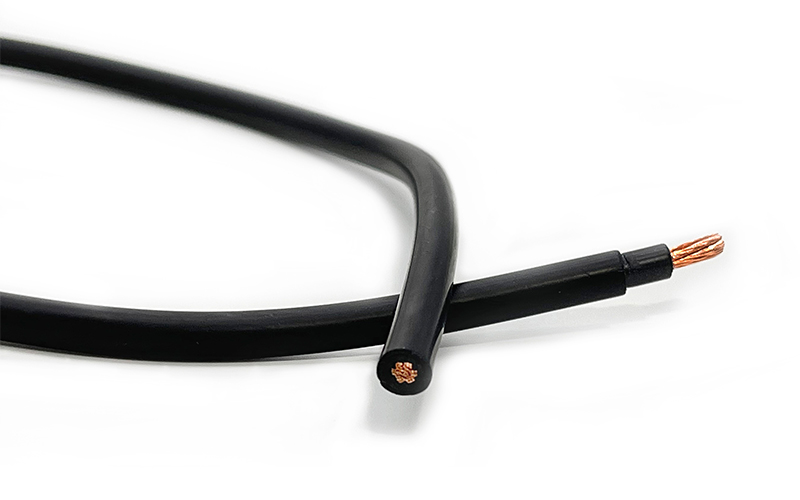安全で効率的な電力伝送を確保するには、アルミニウム ケーブルの適切な種類の絶縁体とジャケットを選択することが重要です。この記事では、断熱材とジャケットのタイプに利用できるさまざまなオプションと、特定の用途に最適なオプションを選択する際に考慮すべき要素について説明します。
Insulation Types of Durable Aluminum Cable
Aluminum cables come in a variety of insulation types, each with its own advantages and disadvantages. The most common insulation types for aluminum cables include:
1.1 Polyvinyl chloride (PVC)
PVC is a popular type of insulation for aluminum cables because it is relatively inexpensive and provides good electrical insulation. However, PVC is not as durable as some other insulation types and can become brittle over time.
1.2 Cross-linked polyethylene (XLPE)
XLPE is a more durable insulation type than PVC and is often used in applications where the cables will be exposed to harsh conditions. XLPE is also more resistant to chemicals and high temperatures than PVC.
1.3 Ethylene Propylene Rubber (EPR)
EPR is another durable insulation type that is often used in high temperature and high voltage applications. EPR is also more resistant to ozone and UV radiation than PVC and XLPE.
_1661584667319.jpg)
Aluminum Cable sheath type
In addition to insulation, the type of jacket an aluminum cable has plays an important role in its performance and durability. The most common types of aluminum cable jackets include:
2.1 PVC
PVC is a common jacket type for aluminum cables because it is relatively cheap and has good electrical insulation. However, PVC is not as durable as some other sheath types and can become brittle over time.
2.2 Polyethylene (PE)
PE is a more durable jacket type than PVC and is often used in applications where the cable will be exposed to harsh conditions. PE is also more resistant to chemicals and high temperatures than PVC.
2.3 Low Smoke Zero Halogen (LSZH)
LSZH is a flame retardant sheath material that emits very little smoke and does not produce toxic halogens when exposed to heat or fire. For safety reasons, this type of 耐火ケーブル sheath is commonly used in industrial, commercial, and residential buildings as well as in transportation systems.
Factors to consider when choosing the type of insulation and sheath
There are several factors to consider when choosing the type of insulation and jacket for your Aluminum Cable, including:
3.1 Working temperature
The operating temperature of the cable will determine the maximum temperature at which the insulation and jacket can safely operate. For example, PVC has a maximum operating temperature of 60°C, while XLPE and EPR can withstand temperatures up to 90°C.
3.2 Rated voltage
The voltage rating of the cable will determine the maximum voltage at which the insulation and jacket can safely operate. It is important to select an insulation and sheath type with a voltage rating equal to or greater than the cable rating.
3.3 Environmental conditions
The environment in which the cable is installed will also play a role in determining the best type of insulation and jacket. For example, if the cable will be exposed to chemical or UV radiation, it is important to choose an insulation and jacket type that can withstand these conditions.
3.4 Safety and fire regulations
In addition to the above factors, safety and fire regulations also play a vital role in determining the best type of insulation and sheathing, For example, if the cable will be installed in a building or transportation system, it may be desirable to use a sheath type that is flame resistant, emits minimal smoke when exposed to heat or fire and does not contain toxic halogens, such as AWM UL2464.
3.5 Durability and maintenance
The durability and maintenance requirements of the cable should also be considered when selecting the type of insulation and jacket. For example, XLPE and EPR are more durable than PVC and may require less maintenance over the life of the cable.
結論は
Selecting the correct type of insulation and jacket for Aluminum Cable is critical to ensuring safe and efficient power transmission. The most common insulation types for aluminum cables include PVC, XLPE, and EPR, while the most common jacket types include PVC, PE, and LSZH. When selecting the best option for your particular application, it is important to consider factors such as operating temperature, voltage rating, environmental conditions, safety and fire regulations, and durability and maintenance. With the correct type of insulation and jacket, your aluminum cable will be able to perform to its fullest potential, providing reliable and efficient power transmission for years to come.
Additional Information
When choosing the type of insulation and jacket for your Aluminum Cable, be sure to consult an expert who can guide you in the right direction. It is also important to consult relevant safety and fire regulations, which may vary by location, application, and industry sector. Always make sure that the type of insulation and sheathing you choose meets the requirements of the National Electrical Code (NEC) and other relevant standards in your area. With the correct type of insulation and jacket, aluminum cables will provide the safe, reliable, and efficient transmission of power which is essential to any electrical system.
任意のケーブル 標準的な高品質ケーブルを開発、製造するだけでなく、お客様のニーズや製品用途に応じた優れたソリューションも提供します。いつでもお問い合わせをお待ちしております。
関連製品





